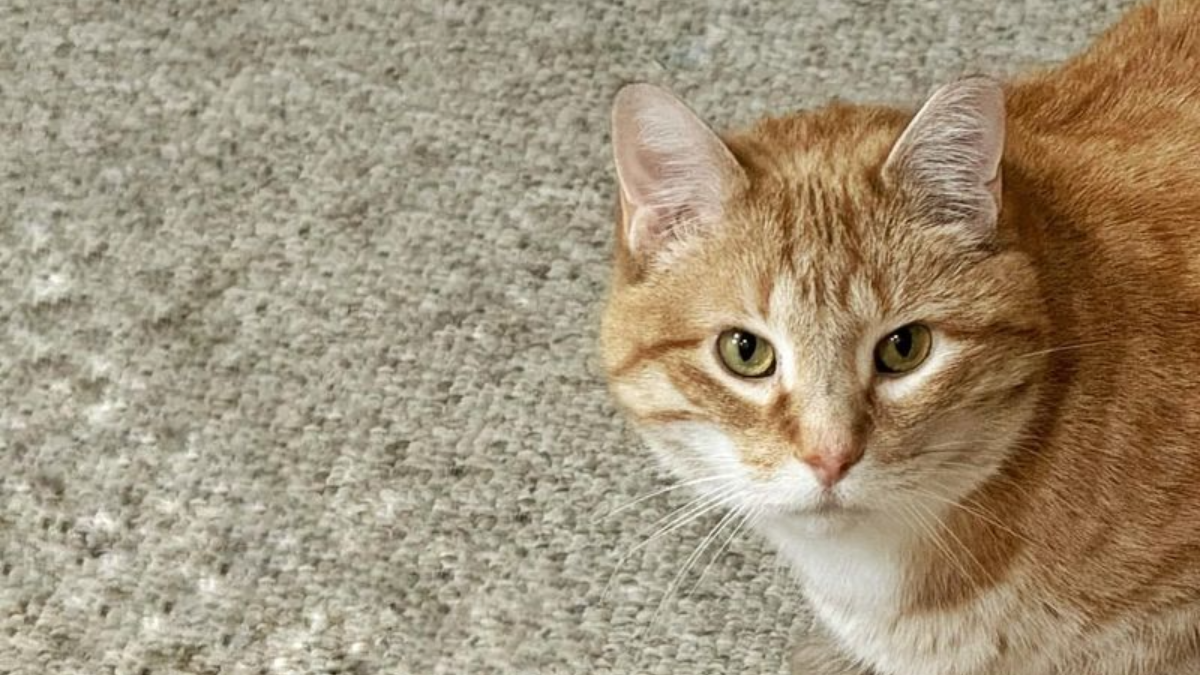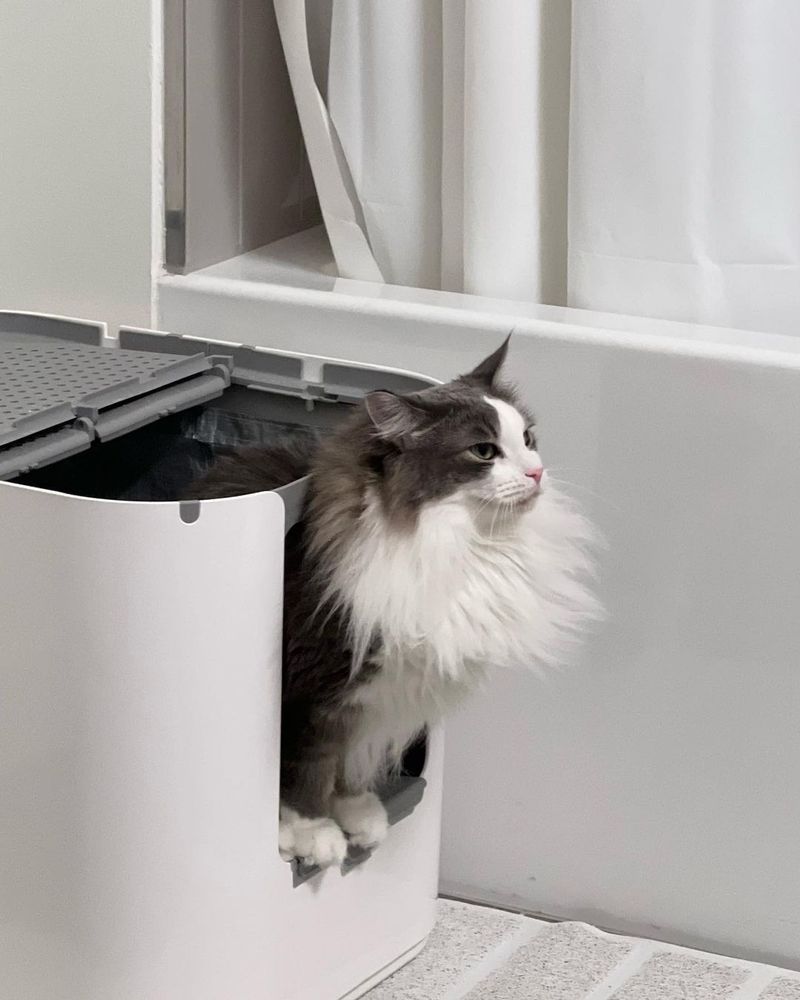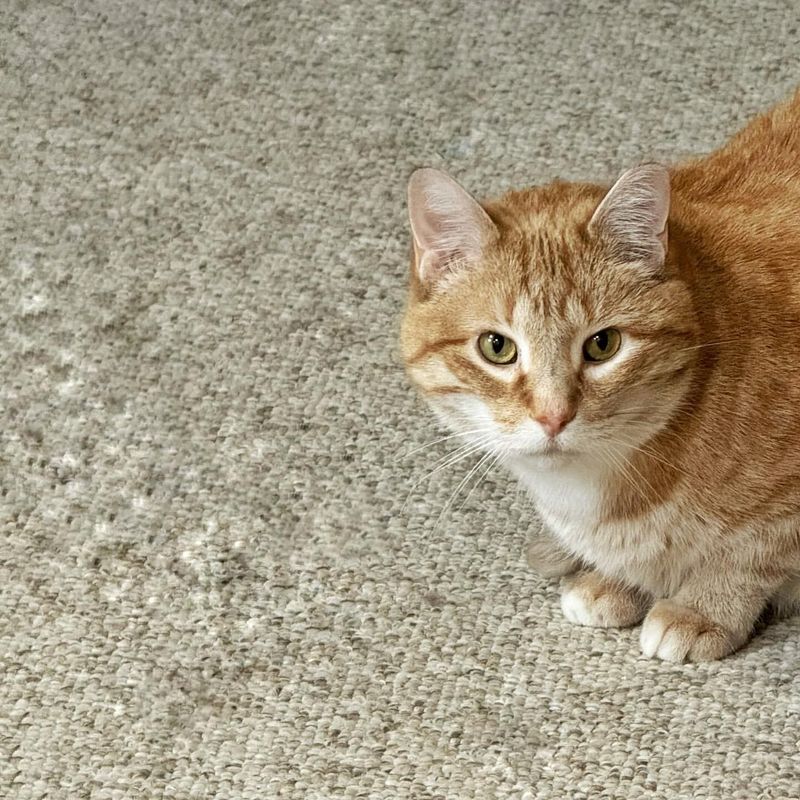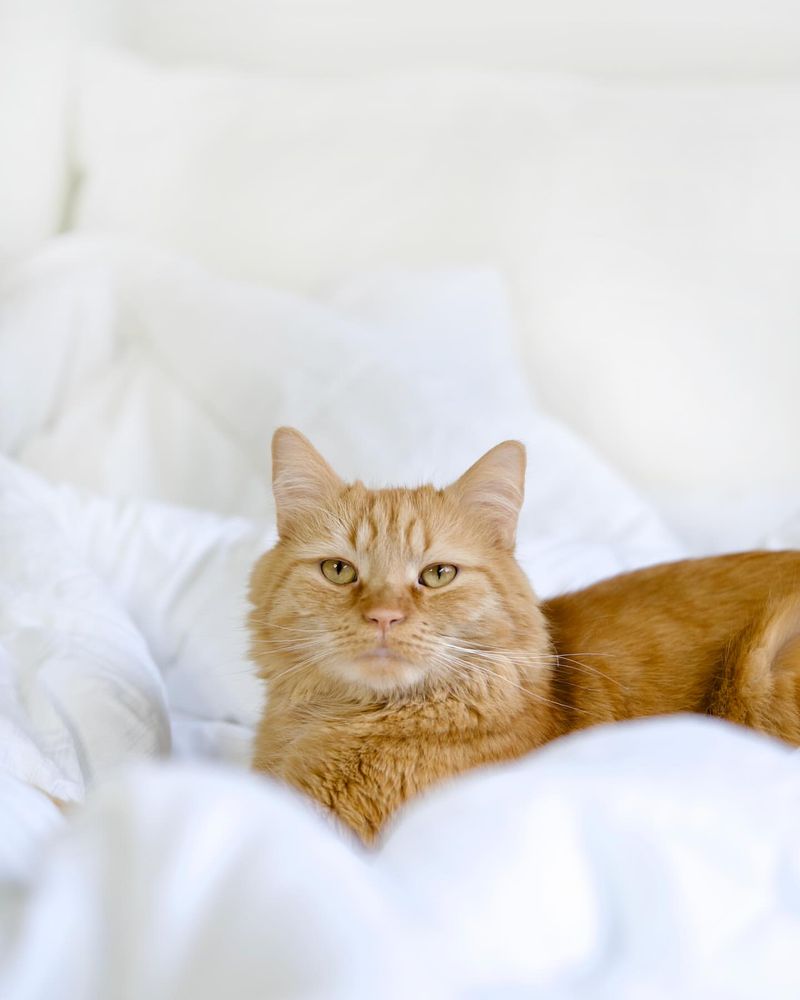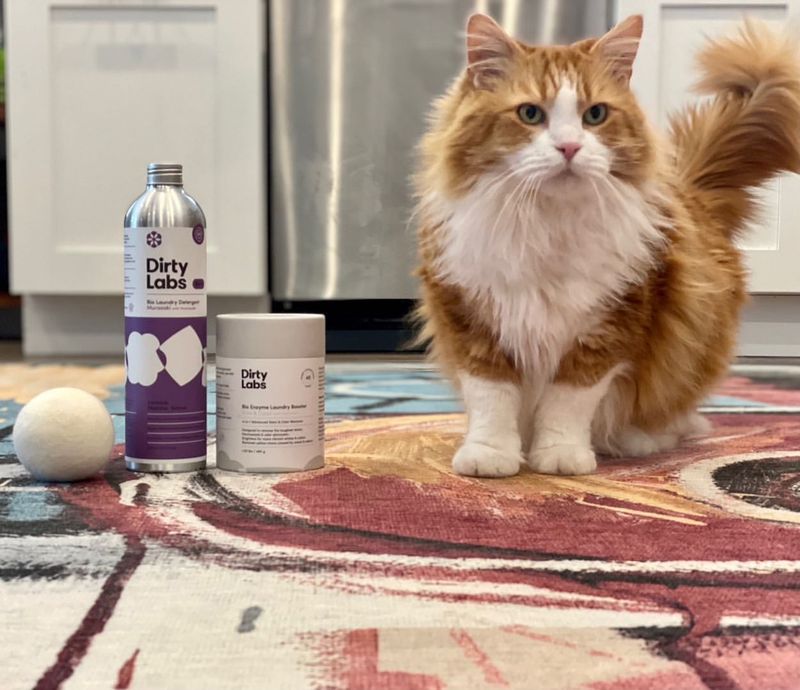📖 Table of Content:
Few things can put a damper on your love for your furry friend quite like discovering yet another damp spot on the carpet. If your cat has decided that your rug is the new litter box, you’re probably feeling frustrated, confused, and maybe even a little hopeless.
Don’t worry—you’re not alone, and there’s good news: this behavior can be corrected!
Cats are creatures of habit, and when they stray from their litter box, there’s almost always an underlying reason. Whether it’s medical, behavioral, or environmental, identifying the cause is the first step to solving the problem.
With that in mind, here are five tested and effective strategies for dealing with it.
1. Litter Box Placement
Ensuring your cat’s litter box is in the right location is crucial. Cats prefer privacy and quiet, so place the litter box in a secluded area, away from noisy appliances or high-traffic zones. Proper placement can encourage your cat to use it regularly, reducing the chance of accidents.
It’s essential to keep the box clean. Scoop it daily and change the litter weekly. A fresh, odor-free box is more appealing to cats. Try different litters to see which one your cat prefers, as texture and scent can play a significant role in their willingness to use the box.
If you have multiple cats, ensure there are enough boxes. A good rule of thumb is one box per cat, plus an extra one. This prevents territorial disputes and gives each cat a place to go, promoting harmony in your home.
2. Medical Checkup
Sometimes, urinating outside the litter box can indicate a medical issue. A visit to the vet is essential to rule out urinary tract infections, bladder stones, or other health problems. Early detection and treatment can prevent further complications and provide relief to your furry friend.
During the checkup, discuss any behavioral changes you’ve noticed. A thorough examination can identify stressors or underlying conditions affecting your cat’s habits. Vets can also recommend dietary changes or medications if needed.
Remember that cats often hide their discomfort. Regular checkups help catch issues early. Besides medical conditions, anxiety or stress can cause inappropriate urination. Identifying the root cause ensures your cat receives the proper care and improves their quality of life.
A happy, healthy cat is less likely to have accidents.
3. Behavioral Training
Training your cat to break the habit of peeing on the carpet takes patience and consistency. Positive reinforcement is an effective strategy. Reward your cat with treats or affection when they use the litter box. This helps them associate the box with positive experiences.
Avoid scolding or punishing your cat. Negative reactions can increase stress and exacerbate the problem. Instead, focus on encouraging desired behaviors. Use treats, toys, or playtime to reinforce litter box use.
If the problem persists, consider consulting a pet behaviorist. They can offer tailored advice and solutions to address your cat’s specific needs. With the right approach, you can modify your cat’s behavior and maintain a cleaner, more peaceful home environment.
4. Stress Reduction
Stress is a common cause of inappropriate urination. Creating a calm environment can help alleviate anxiety for your cat. Provide a comfortable space with plenty of hiding spots and cozy bedding where your cat can retreat and relax.
Consider using pheromone diffusers or sprays to improve your cat’s sense of security. These products mimic natural cat scents and can help reduce stress. Playing soft, calming music can also create a soothing atmosphere.
Routine is crucial for cats. Maintain consistent feeding, playtime, and cleaning schedules to provide a sense of stability. If there are significant changes in your household, gradual introductions help ease the transition. A stress-free cat is more likely to use the litter box, keeping your carpets clean and fresh.
5. Cleaning and Deterrents
Thorough cleaning of soiled areas is vital to prevent repeat incidents. Cats are drawn to previously marked spots by scent. Use enzyme-based cleaners to remove all traces of urine, as these break down the odor-causing compounds.
Avoid ammonia-based products, as they can mimic the smell of urine and attract your cat back to the area. Once cleaned, consider using deterrents. Aluminum foil or double-sided tape can discourage your cat from revisiting these spots.
In addition to cleaning, make the litter box more appealing. Experiment with different litter types or box styles to find what your cat prefers.
A clean, inviting litter box reduces the allure of carpeted areas. By combining effective cleaning with deterrents, you can protect your carpets and promote proper litter box use.
